Are you a horror enthusiast who enjoys reading comic books? Then we have the ideal combination for you. We present Nameless, a masterpiece in our opinion, by Grant Morrison. At its most basic level, Nameless is the story of an anonymous hustler who, due to his expertise in all things obscure, gets recruited to join a mission to destroy an asteroid on a collision path with Earth.
However, this is only the surface of the story. Below that come reptilian bounty hunters, severed heads, apocalyptic visions, and constant references to the Qabalah and Qliphoth of Jewish Hermeticism. Readers who are looking for a clear story will be let down. The story progresses in a dreamlike way, shifting back and forth in time, and much of the storyline is left hazy and unclear, allowing for a variety of interpretations. Nameless, on the other hand, is so powerful precisely because of these factors.
Morrison’s books are infamous for their enigmatic endings, but it pays off in this case, as the story’s faulty logic creates something truly horrifying and unsettling. The artwork of Chris Burnham, which is both beautiful and horrifying, is consistent throughout, and the characters’ emotive faces and body language allow the book’s emotion to shine through.
The gruesome moments, which occur regularly, are vivid and disturbing. Nameless is a fantastic, ambitious comic unlike anything we have seen in recent years, and we are going to break it down for you today.
Issue #1 – The Beginning – Welcome to the labyrinth
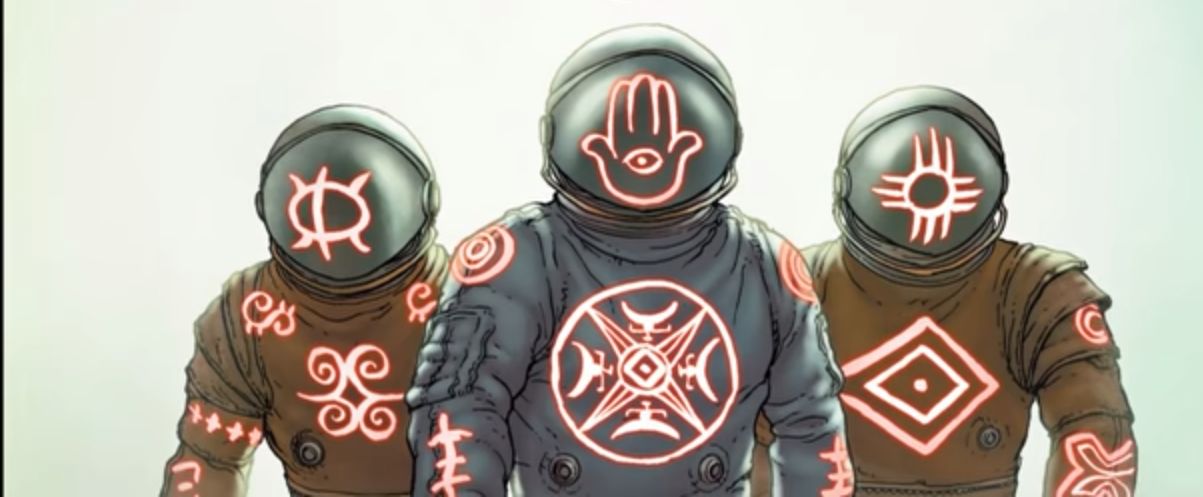
Lovecraft has a strong effect on Nameless, which is unsurprising, with all the dream, meta-universe, and occult elements. The story begins with an intense moment of sheer horror interspersed with psychedelic surrealism, far more so than Alan Moore’s more subtle creeping terror. This zooms out to include a worldwide threat, raising the stakes in a vaguely menacing manner before zooming back in to introduce a compelling antagonist.
It then speeds into a twisted, mind-bending pursuit sequence that culminates with the introduction of a completely new conflict. In media’s res, Nameless is revealed to be attempting to steal the key to the empty box from Nan Madol or “The Empty Spaces” by jumping across dreams.
It’s just as deep and enigmatic as it sounds. This feeling grows stronger as a larger conspiracy emerges, drawing the earth and moon into the stories’ orbit. Although Nameless #1 is classified as a horror or psychedelic thriller, it is a genre-defining work. The tale rejects cliches and does whatever it wants. There are allusions and comparisons to be made, but they are more for the purpose of understanding the story than for providing a foundation for it. They’re nothing more than a description of a comic that includes whatever aspects are required to convey meaning.
In Nameless #1, Morrison tells both micro and large stories. Readers are presented with small anecdotes of the crimes being committed on Earth in a micro-narrative. Only a few panels capture the entirety of events.
The main plot revolves around Nameless and the conspiracy in which he finds himself. Morrison constructs a whole world through the balance of the larger narrative and the micro-narratives, in which both sections reflect and give meaning to one another.
In terms of the plot, Nameless is hired to infiltrate the dream world and steal a Dream Key, meets The Veiled Lady, who has a parasite stuck to her face, and is then told by his employer that he will be traveling to space to help stop an asteroid from colliding with Earth that has the door to the anti-verse on its side from colliding with Earth.
Chris Burnham’s artwork is flawless, and he may have been the greatest possible choice for this comic. The layouts are aggressive and rhythmic, unorthodox to the point of frightening, with mirrored and invasive panels, as well as corners that are rounded off at times.
The opening ten pages are particularly frantic, with gutters that slash from corner to corner, trapezoidal panels that are bisected, and so on. The rest of the comic is more settled, separating the real world from the Dreamlands, which aids the reader because the plot can be perplexing on its own. This one is only the first issue and sets the stage for five more issues that round up the comic.
Issue #2 – A Galactic Mission to Save the Earth
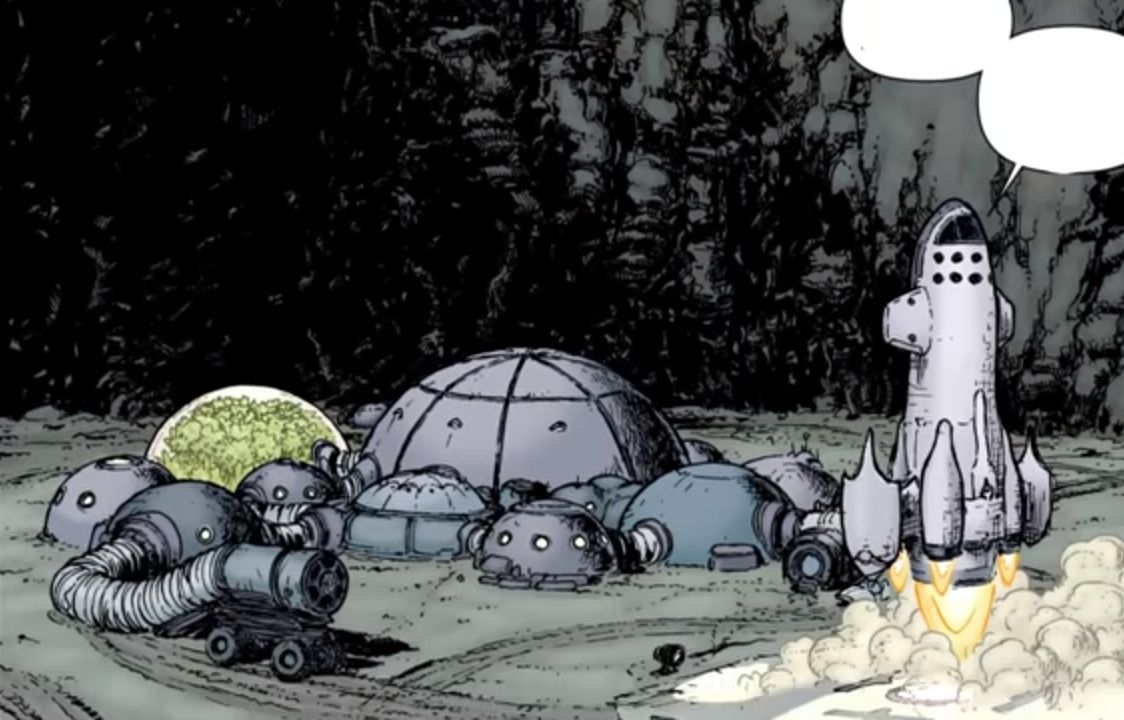
Nameless goes into space to join a crew on a mission to save the earth from Xibalba, an asteroid on a collision course with Earth, in “Nameless” #2 by Grant Morrison and Chris Burnham. Nameless #2 is a strange, eerie, gruesome, and beautiful “Morrison” novel. All of this is said with the greatest respect and admiration.
At the start of this issue, Nameless lands on the moon, hoping to finally figure out what the mission is and how close the Earth is to being obliterated. Unfortunately, it appears that the team’s final occult expert went nuts while analyzing the asteroid… The Earth has around 30 days till the same asteroid collides with it. Morrison’s customary concerns in mysticism and antiauthoritarianism are combined with sci-fi horror story twists and a potentially world-ending menace in this novel.
The first issue of “Nameless” is largely focused on the occult, but the second issue is more space opera. The main hero, Nameless, is still a mix of magicians, wise men, and rebellious loners. Morrison manages to make the character feel fresh despite his failed romantic drive and his “gruff cowboy with a heart of gold and has all the answers” attitude.
This comic is jam-packed with science fiction, horror, and occult elements. This issue also takes us to the moon and the personnel already stationed there, as well as a look at a variety of theories ranging from heaven and hell to doomed humanity. Grant Morrison continues to leave the reader dubious of the true narrative, if not entirely perplexed, yet the way he weaves the story makes it impossible to leave this comic.
It’s an elevated round table discussion of cosmic combat on the moon, sandwiched between cannibalistic body horror. This issue continues the story of the titular character through a maze of mind-bending panels, but if you’re hoping for more clarity, you’ll be disappointed. If it’s possible, this issue will leave you even more perplexed than the first, but that’s the beauty of this comic; it makes you want to read more to figure it out.
With an entertaining and intriguing graphic style, Chris Burnham and Nathan Fairbairn bring the story to life. It’s daring and colorful, with plenty of tints and colors to keep the eye occupied among the vast amounts of explanation and speech. Burnham’s art isn’t very beautiful or graceful, but he has a distinct style and a seamless storytelling technique.
His twitchy, fuzzy line enhances the anxiousness and grittiness in the action, and his visual timing and imagery are vital to the eerie effects. The panel composition, in which panel shapes form tunnels and tubes, is clever and entertaining. Fairbairn’s color scheme of frigid neutrals and neon reds and blues isn’t particularly appealing, but it works in the setting of the horrible tale.
Issue #3 – Who Will Win – Good or Evil?
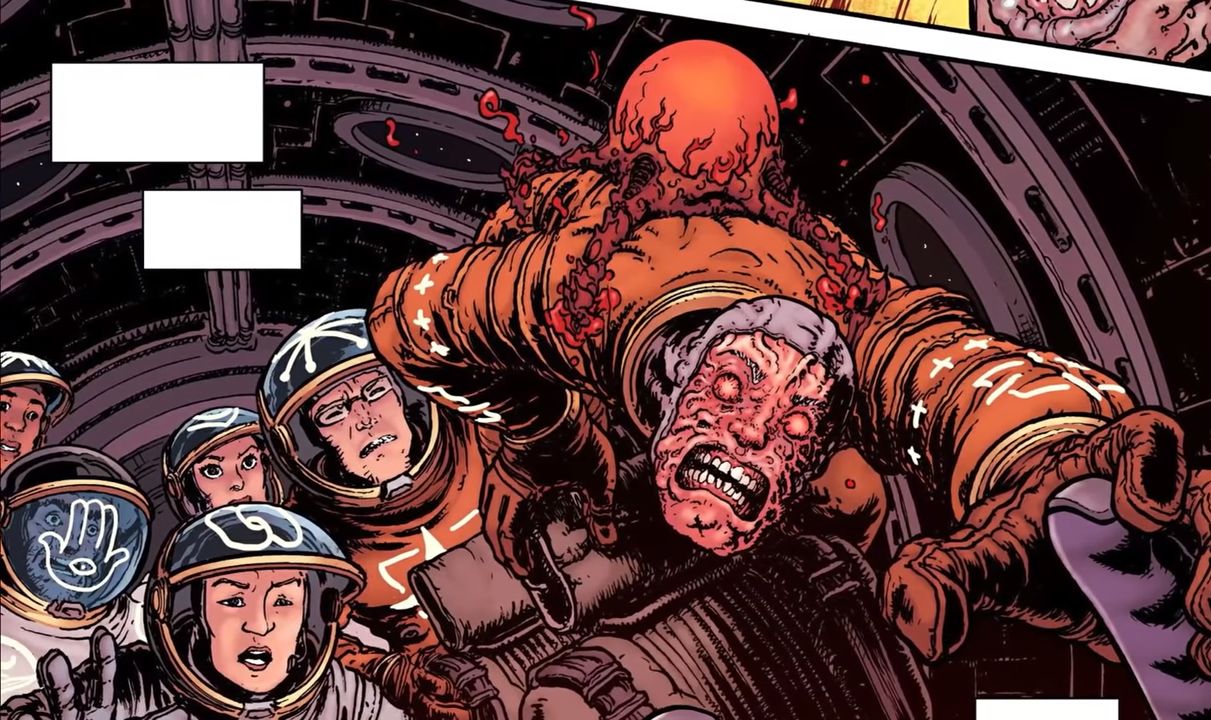
Nameless #3 is, according to us, is the greatest issue of the mini-series so far. In this issue, we find our team approaching an asteroid/bomb with an old symbol on it that is hurling itself toward Earth millions of years after an epic struggle between good and evil was fought. This throwback has survived and is presently in use.
This cosmic occurrence has placed some influential people in the United States on notice, and a crack squad made up of some of the best professionals in their fields of study has been established to combat the threat from all sides. One man named, ‘Nameless’ is among this group, as we already know and he has a great awareness of the occult and the supernatural world, and he could be the X-factor in halting this menace, which has multiple dark components.
As they approach the “evil” asteroid Xibalba, bad things are in store for our brave crew of sigil-daubed astronauts; as if anything else could be expected when they’re met with a massive skull formation on the surface! Nameless #3 is full of Lovecraftian nightmares hiding in the silent blackness of space, and that’s just the beginning for the doomed squad.
Most of the issue is spent with our astronaut team, and three issues in, it’s still not clear who’s who or what their personalities are. As these explorers enter a gothic alien cave, launch probes to study the region, and start getting picked off one by one, the comic seems a lot like the Ridley Scott blockbuster Prometheus. Shit really hits the fan in this issue.
Things worsen, as they lose control of their surroundings. The dread is beautifully represented through the art, which plays with angles and a sense of gravity. The expression of terror and gore is priceless. Technology is rendered obsolete. Things aren’t looking good, especially since the glyphs aren’t doing much more than rubbing off. Fear takes over, and the sequential imagery is enough to make us feel uneasy as readers.
The supernatural themes of Nameless are again revisited. Nightmarish visions occur, and our crew loses their sense of reality. Everything appears to be lost until we return to our main enemy. Mr. Nameless, who awakens somewhere else, is ostensibly back on Earth. Was it all a nightmare? Probably not, because Grant Morrison’s writing is anything but straightforward. That last page, in particular, is quite scary.
Grant Morrison’s writing quickens and shifts away from the shock and awe he used previously, returning to a suspense-building mode that works effectively as our crew enters this new and uncharted dark region. Chris Burnham’s artwork is as fantastic as it has always been. The gigantic skull rock formation on the opening page is memorable, to say the least, and there’s some great perspective work after the spacecraft reaches the asteroid.
This issue’s stars are his art and Nathan Fairbairn’s colors. It really carries the plot, and his graphics provide a high degree of creepiness that fits the story’s goal of being an original supernatural tale set in deep space.
Issue #4 – The World Descends into Complete Anarchy
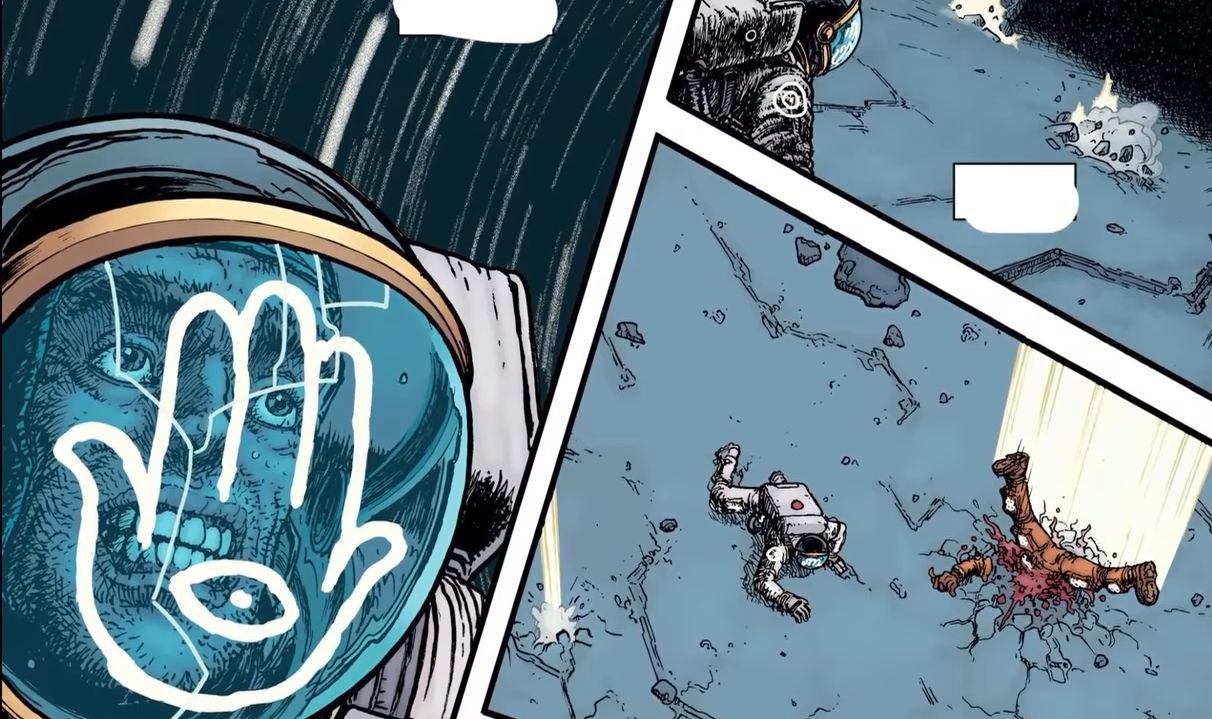
When their captors eventually expose themselves, the planet slips into anarchy, and the astronauts stranded in the Tunnels of Xibalba must face horrible tortures. Is reality collapsing when all human hopes, anxieties, doubts, and dreams are subjected to an inhuman, sadistic intelligence’s ruthless and relentless scrutiny?
Writer Grant Morrison takes you on a wild rollercoaster between reality and a dream-like condition, jerking you back and forth between the two until you begin to doubt your own existence. Nameless #4 drags you back into the nothingness, spits you out, drags you back in, flips you over, and then asks how you’ve been.
Our heroes are on their knees before the extra-terrestrial presence in Nameless #4. Nameless’ sigils haven’t kept the astronaut crew safe, and for the duration of the issue, he and the survivors are reacting to the horrors around them. It brings the question: what exactly was the plan?
Almost every scene depicts a character in a vulnerable position: a patient of a creepy psychiatrist, a subservient to a domineering father, or a victim of cruel aliens torturing humans; there’s the imagery of mice in cages being experimented on, as well as warped tarot cards depicting clear master and slave interrelations.
Nameless is being pursued by a purple bubble, just like Rover in The Prisoner was pursued by Patrick McGoohan! Onboard Xibalba, Nameless, and the crew are held captive – but why, and what does the asteroid want? It appears that Xibalba is attempting to comprehend humanity – it even asks “What Is Human?” at one point – and it could easily be the authoritative figure in each scene, attempting to unravel humanity’s physical and psychological riddles.
The plot is never entirely understood the first, second, or even third time around, as is typical of Grant Morrison’s work, and he pushes the reader to come up with their own interpretations with very little guidance. Scenes occur out of order, with no indication of time — are they from the past or the future? Is it possible that they are fictitious and not real at all?
Is Nameless there on Xibalba or only in his head? Is Xibalba a symbol of progress or a genuine threat? Nameless #4 isn’t an easy read, and although it appears to be a piece of a greater jigsaw, I expect it to be just as tough to comprehend when read on its whole. It’s unsettling and uncomfortable, but it’s also intriguing and unique.
Chris Burnham’s art shines brightly once more, with some beautiful layouts that lend style to the Nameless series. The sigil-shaped panels and the page backgrounds are stunning. The torture scenes are extremely explicit, so be aware that this comic contains a lot of graphic violence. Nathan Fairbairn’s colors are likewise quite vibrant, with colors bursting through the asteroid’s blackness in stark contrast to the full color of ordinary life, and then segueing into mono-color nightmares in the torture sequences.
The rising Hell on Earth is depicted in some bizarre artwork. The asteroid would “narrowly miss the Earth,” according to an earlier article in the issue. The Earth is spared from a worse fate, as Xibalba’s psychic reach may extend to all of its inhabitants. Before the mark of Xibalba, a full-page depicts humanity at its ugliest. Yes, this is terrifying, but the question that keeps coming up is “why?” All of this should have a cause and make sense, I keep thinking. The suspense of Nameless is built upon this.
Issue #5 – Who Really Is Nameless? The Origin Story
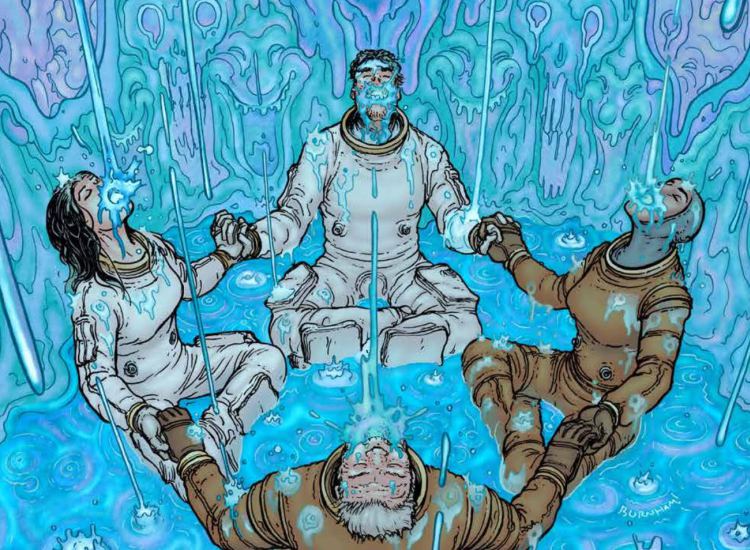
Nameless learns about his past and discovers why and how he lost his name in Grant Morrison and Chris Burnham’s “Nameless” #5. The plot of “Nameless” #5 is based on a classic horror trope: generating doubts about sanity and perception. Nameless appeared to be the final guy standing in the last issue, the last one to fall to hostile alien captivity. “Nameless” #5 is a flashback issue that explains how the protagonist may not be who he believes he is. This is a classic horror moment of truth: the evil that the protagonist dread has already infiltrated his body without his knowledge. After making contact with a godlike entity, Nameless develops a bloodthirsty temperament. He’s now a conduit to a darker realm linked to the Xibalba rock, which we believe is why he’s still alive.
Morrison weaves together several strands from earlier issues, adding layers of insight while also raising new questions. Morrison has an excellent capacity to leave us both perplexed and understanding of his weird narrative in this mini-series. Morrison sparks incredible talent from both Chris Burnham and Nathan Fairbairn as the fate of the entire universe hangs in the balance. Morrison has a knack for mixing genres, and he does so deftly in “Nameless” #5.
Esoteric mysticism, horror, spirituality, and science fiction collide to create a terrifying issue that relies on anticipation and the different jaw-dropping pictures created by Burnham. Going from the present to the past, the story’s speed is abrupt. It can be difficult to tell whether what we are witnessing is happening in reality or on another plane at times. Morrison is such a talented writer that he effortlessly convinces us to understand what is occurring to Nameless and the world around him, even if only subliminally.
Morrison aims for the atmosphere to be oppressive and unsettling, and he succeeds. Burnham’s page compositions are purposefully fractured, making reading “Nameless” #5 feel like a nightmare or a hallucination. Scene breaks could indicate memory lapses or mental breaks. His linework also offers a mind-boggling amount of diversity. His textures make environments appear more overpowering or viscerally repulsive.
For a brief moment, his squiggly line conjures up connections with infestation, intestines, and crawling things in the alien seance scene, but the other scenes underline how his squiggly line readily conjures up associations with infestation, intestines, and crawling things in the other scenes. Nameless looks up at a magnificent home on a dark and foggy night in the first issue. Even this modest image is packed with gloomy foreshadowing.
Burnham breathes life into a tale that begs for what he’s doing. Outside the Ghost House, Fairbairn’s dense grey fog adds a thick heaviness to the air. On the page where the “superbrains” are presented, his red background makes the foreshadowing heavy-handed but evident. The planet scene’s electric neons are quite attractive and add to the shock element.
Issue #6 – The Culmination of a Mind-Bending Journey Through Space & Time
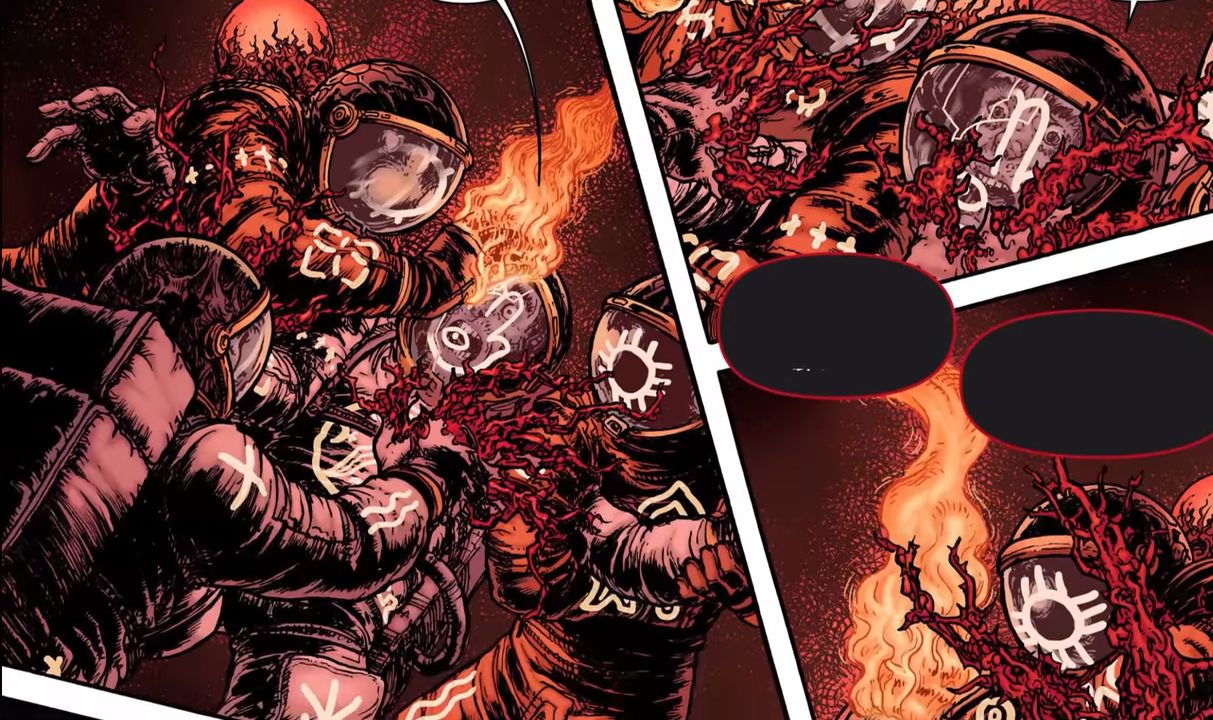
Nameless and the crew of the White Valiant have reached the end of their journey. There can be no escape, exit, or hope while imprisoned within the convoluted mind of a horrific alien lifeform. The key mysteries answered in Nameless #6 are who is the Veiled Lady and what role she will play in Earth’s salvation or damnation. This issue primarily explores the horrors of the mind as well as the horrors of space.
We get a wonderful explanation of what’s going on. It appears that there was some unearthly conflict that terminated life on Mars, and the losing side almost committed special suicide. There’s one piece left, and a great new design is in the works, with our “hero” Mr. Nameless set to play a key role.
The question is what constitutes reality, as this may all be a nightmare. Whatever the situation, what remains of our worries is terrifying. The worst in the series in terms of the true misery of humanity’s helplessness. The fear of the unknown is merely the icing on the cake. In this apocalypse, there is some instruction for a strategy or prophecy to maybe eliminate the infection.
There is a strange twist of events near the end, as the Moon itself is transformed after a prophetic impact, leading to the next step for the veiled woman to carry out whatever plan she has. I see a long-awaited turning point, and I’m hoping for a little less horror and more of a contemporary plot with more esoteric mythological elements. Chris Burnham’s work continues to impress with its beauty and refinement.
Each page is a mood-setter thanks to his attention to detail, from the tiniest dimple to the proper amount of shading and light. His creature creations have a hauntingly gorgeous sense of style. His clever panel placement, which brings order to the pandemonium for us readers, feels like a service to us. This nuanced information, as well as Nathan Fairbairn’s coloring, which uses distinct color schemes to differentiate between different times, memories, and worlds within Nameless’ mind, greatly enhances the reading of the comic.
Why You Should Read Nameless
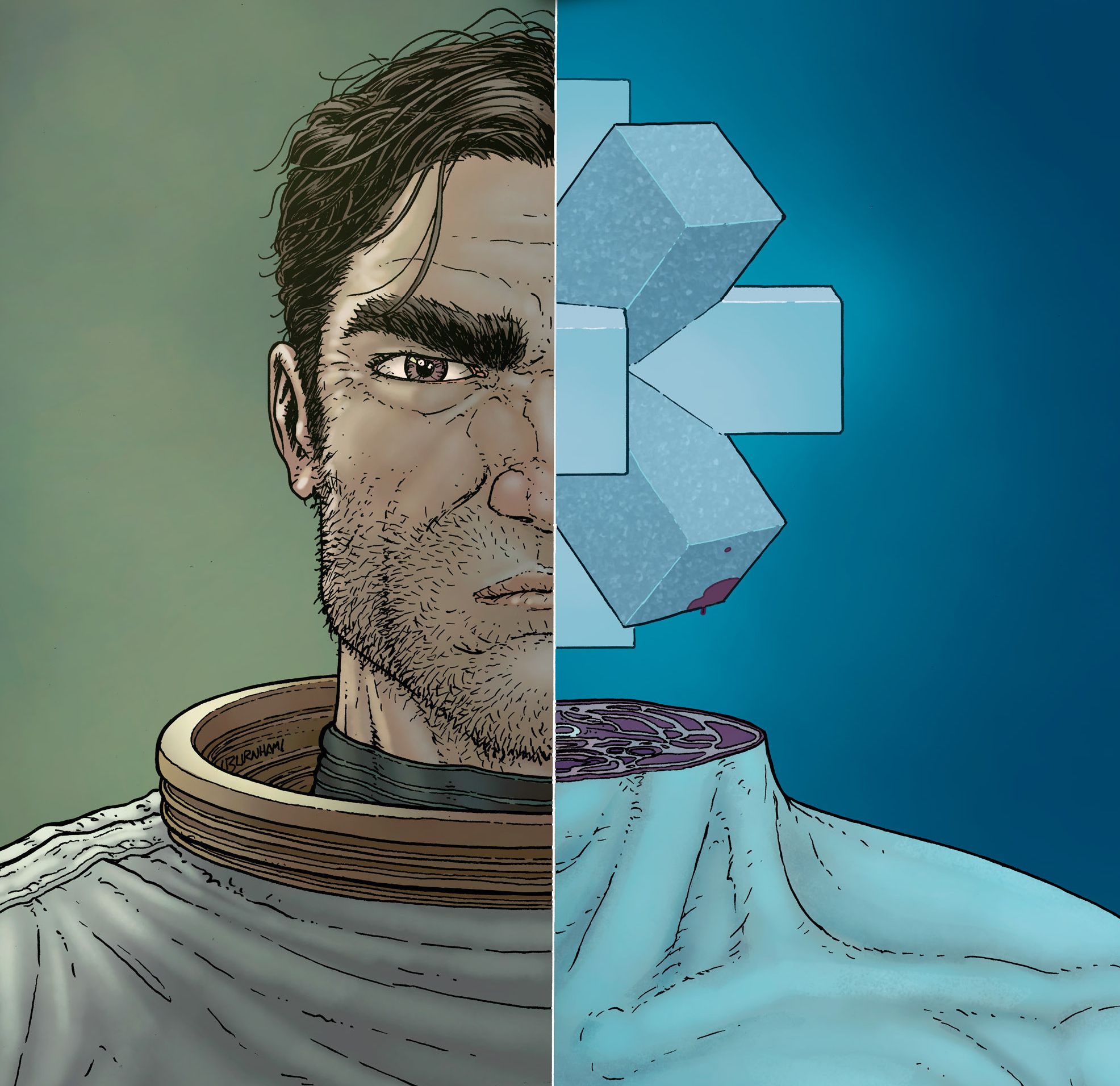
Ancient beings from another dimension are physically and psychologically crossing over into ours, and Nameless, a member of the group that opened the door, encounters a masterfully twisted version of the Christian religion, science, and history that is coded with Enochian symbols.
As Nameless navigates us through his invaded mind, we are presented with numerous scenarios, some parallel, some taking place in the past and future. Morrison ties the numerous layers of the story together into a genuinely mind-bending and complicated tale, ensuring that the reader is continuously working to put the tale together, allowing the reader to interpret the fractured storyline in a variety of ways. This body of work spanning over 6 issues is easily the scariest work to ever come out from the publisher Image.
It’s a non-linear, hallucinogenic comic that’s completely devoted to its medium, and it’s terrifying because of the way comics work: they’re quiet, private, and full of small gaps between panels where anything may happen. Faces are ripped off, astronauts are ripped limb from limb, and several people murder and consume their own families in the name of the demonic thing that dwells in Xibalba.
The novel concludes with the concept that every person remembers the intergalactic struggle between good and evil that occurred millions of years ago on a genetic level. Because of their inherent trauma, Morrison’s human characters endure dread and anxiety in their daily existence.
In a shocking twist, the all-powerful force that humanity has come to know as “God” is revealed to be just one of the vast warring entities with no regard for humans. As it approaches Earth, the creature perplexes the protagonist by torturing him in every way it can think of, all the while asking him, “What is human?” over and over again.
In terms of Morrison’s deep plot, Nameless is psychological, horrible, and immensely complicated, which is nicely complemented by Burnham’s art and Fairbairn’s coloring. The total package contains a lot of information for the reader to comprehend in one sitting, resulting in a series that can be read again and again. If you’re a fan of Lovecraftian horror, in and out of dreams and realms, packed with symbolism and deeper meaning, this one is definitely the comic series for you!
